#european or japanese species instead. probably more but those are the two i see the most. when we have plenty of nagive species here
Text
ppl who only care about the aesthetics of things do kinda drive me crazy a bit
#i JUST want native wild flowers. ok?#idgaf if perennials dont bloom all year i dont care if theyre not always colorful i love green as a color too AND THATS NOT THE POINT OF#ME GETTING FLOWERS ANYWAYS! i want native flowers for the native pollinators and probably other native plants for birds n shit#but all i can find at plant places is stuff thats like. the same species but not native#its just so stupid its not sold as a default like they literally grow here. they literally THRIVE here#and it feels like everyone im talking to irl about flowers only cares about whatever looks good like plz cmon plz i beg of you#fellow humans please. oh my fuck. give a fuck about something soon bc the worst thing to be is the guy at the end of the world who knows#its ending but is smiling while its on fire bc you gave up hope and indulged in the things that are pleasing to you instead of just getting#th fucking native lobelia species jsdsdkds#like idk about you but i at least want my soul to fucking rest easy knowing i did the best i could instead of giving so much about#aesthetics that it overrides my ability to make a idk perhaps more moral decision. ik flowers arent the most pressing issue but native#species dying is. and if you're already getting flowers theres literally no reason not to just get the native version of whatever#sometimes its hard for me to want to just 'let people enjoy things' when enjoying things means putting your time/effort/energy/money/etc.#into shit you very easily could have picked something more ethical or better for the world w.#it just feels like everything is dying around me and i dont know how to stop it so i want to do my best to help whats dying where i am to#try to keep it alive and it just feels like other people around me dont have that as a priority at all and its infuriating.#i genuinely get pretty emotional when i think about native species dying and how everything in temperate climates is being overtaken by#european or japanese species instead. probably more but those are the two i see the most. when we have plenty of nagive species here#like the same thing just native but idk maybe it doesnt have enough eurocentric features 🤪 sjsjsksjsjsks
2 notes
·
View notes
Text
2020 mini-review pack
Di Gi Charat (1999)
Episodes watched: 7
Platform: VRV (Hidive)
Di Gi Charat (pronounced like “carrot”) is a series of fast-paced 4-ish-minute shorts nominally about Dejiko and Rabi-en-Rose, rivals trying to be Earth’s greatest idol. Who are, respectively, a catgirl and a bunnygirl. Oh, and also they’re aliens? That’s... uh... certainly a premise, I guess. The actual show consists of self-contained gag-filled episodes with no ongoing story, in almost a sitcom kind of way, throwing the characters into situations without context, but with a stable “baseline” situation (unlike, say, Pop Team Epic, where the characters serve more as stock personalities playing different roles in different sketches). Dejiko is a snarky schemer. Rabi-en-Rose is a snarky schemer whose main activity seems to be bothering Dejiko at work. Puchiko is a small and quiet child and behaves accordingly. And Gema is... something? I have no clue, honestly, and neither does the fan wiki. Other recurring characters fill stock roles such as “manager” and “otaku”. A lot of the humor centers around poking fun at fandom. It’s a show by, for, and about otaku from an era before our current internet culture, and since I’m a millennial and not from Japan, that makes it unusually hard to evaluate.
W/A/S: 8/2?/5?
Weeb: Chibis. Catgirls. Idols. Kappas. Kawaii verbal tics. Akihabara. Low-detail background characters who look like blobs or thumbs with faces. Kanji left on-screen but untranslated. Particular sorts of highly-exaggerated facial expressions we may have become familiar with through emoji, but which still haven’t made their way into American media generally. This is ludicrously Japanese.
Ass: This really isn't that kind of show. Although it is certainly designed for adults, as evidenced by the presence of phrases like “naughty doujinshi”.
Shit: The art is fun. It has style shifts from comic strip to watercolor painting to mainstream 90s anime, and looks better than some of its contemporaries that were, uh, “real” shows. The opening takes up about a quarter of the total runtime and gets annoying quickly (but that's because it’s clearly designed for being part of a broadcast block, not binge-watching). Still, unless I’m missing hidden cleverness on account of not having the background knowledge, there’s not much to it. It’s just okay.
-----
First Astronomical Velocity (band, active 2011-present)
Platform: Spotify, surprisingly
Okay, this one is a bit different, and I’m jettisoning the whole format for it. Remember how I said the music-centered episodes of SoniAni were actually pretty good, even though the modeling-centered episodes were so offputting I never finished the show? Well it turns out that First Astronomical Velocity, Sonico’s band, has released several IRL albums. Physical copies may be a little hard to come by, but official uploads of a lot of their music can be found on Youtube and Spotify. Do your musical interests include at least two of: string arrangements that would be at home in a particularly sappy movie soundtrack, 90s-00s alternative rock, synthesizer beep-boops, and that constricted cutesy Japanese women’s vocal style (you know the one I mean)? Then this is for you. They’re a pretty good... uh... alt-pop-rock band, I guess is what I’d call them.
-----
Interspecies Reviewers (2020)
Episodes watched: the entire 12-episode season
Platform: I plead the 5th. But it’s getting a video release soon, so it will finally be legitimately available in English!
I started this year with a plot-light fanservicey animal-people show, and now I’m ending the year with... a plot-light fanservicey animal-people show. But unlike Nekopara, this show had me cracking up, eagerly clicking “next episode”, and not complaining about the premise. I’m sure a lot of people do have a problem with this show’s premise -- which centers almost entirely on various forms of sex work -- and I understand and respect that they will want to skip this show.
But for the rest of you: Interspecies Reviewers is a wildly-NSFW comedy about a group of fantasy world adventurers who gain fame and fortune reviewing brothels of different species. I expected excessive nudity and fantasy tropes, but I didn’t expect to also get serious thoughts. Like showing, in the golem and Magic Metropolis episodes, some of the unsettling problems that are looming IRL as deepfakes and sex robots are in development -- note especially the contrast between consensually and non-consensually basing automata on real people in those episodes. Or the discussion in the last episode of how much riskier sex would be in a world without magic (i.e., ours). This is a much smarter and more interesting show than you’d expect, considering that it has so much sexual content that it got dropped by two of the networks airing it and even its US distributor.
W/A/S: 5/10/4
Weeb: Although heavily influenced by the Western fantasy media canon of European mythology and Tolkien and tabletop RPGs, familiarity with the tropes of fantasy anime will help you “get” this too, as will familiarity with the -sigh- character dynamics and censorship practices of hentai. Especially because it’s a comedy, there are probably also instances where I have completely missed topical references or wordplay that a Japanese person would get, but I can’t think of any specific instances right now of “there was clearly supposed to be a joke but I missed it”.
Ass: Look, this could not possibly have more sexual content without unambiguously becoming porn. Genitals are (almost) always carefully hidden by viewing angle or conveniently-placed glowing (something lampshaded in one episode as an actual feature of one of the species they review), but otherwise, expect lots of nudity and almost nonstop crude humor. Do not watch this with children. Do not watch this with your parents. Do not watch this with friends you don’t know well enough to know how they’ll react to something like this.
Shit: This show is better-made than it deserves to be. It’s pretty dumb at points, but it’s fun enough to make up for it. The art is consistent and pleasant, and the opening and ending themes are extremely fun, but it’s not a serious standout in any of those departments. Also, I swear the background music is stock music, but I don’t remember what other show(s) I’ve heard it in before.
Stray thought: Crim is a precious and relatable cinnamon roll and I love them.
-----
OreSuki OVA (2020)
Platform: Crunchyroll
So, I know I didn’t cover the whole season in my initial review, but I still want to mention the hour-ish-long finale of this show, which was released straight to streaming. Short version of the rest of the season: Joro starts to actually fall for Pansy, but a new challenger, Hose, appears. He is irritatingly attractive and effortless at maintaining the right persona for the situation, leading Joro to describe him as “the main character”. Hose is the sociopathic manipulator Joro wishes he could be, and Pansy, who has a bad past with him, clearly wants nothing more than for Joro to stand up to him. But, since this is OreSuki, it’s not going to be handled simply. No, instead, strap in for a grand finale of Joro and Hose competing in, and trying to manipulate through rules-lawyering, an absolutely ludicrous competition to win the right to date Pansy. And, on top of it, we also get to finally see how Sun-chan got to be the way he is and what happened at that pivotal baseball game that set off the whole plot. What has Joro learned from the experiences of the past season? You’ll see! And you’ll facepalm about it!
Really, you must watch this if you watched the regular season.
W/A/S: 6/5(!)/4ish
Weeb: Basically the same as I said before. Gags referencing other Japanese media, anime and otherwise, and it's better if you’re familiar with the high school romcoms and harem comedies Joro thinks in terms of.
Ass (and slight content note): -sigh- Why does the camera need to be there? Also, Joro, you just committed a little bit of sexual assault for the sake of this contest. Stop.
Shit: I want to rate this overall better than I did the regular season because I think it’s an excellent finale overall because, even though it ends in a very “let’s leave everything unresolved” way that’s common in media that rely on absurd relationships to propel the plot, it does so in a way that makes sense in character. I personally think it would’ve been stronger if it had, well, confirmed its title, and at least some of the other “challengers” had lost interest in Joro, but I guess they probably want a Season 2, since they have so much more source material to work from. There are... oh god 14 light novels?! That is too many.
-----
Your Name. (2016)
Platform: DVD
Two high schoolers -- small-town girl Mitsuha, from Itomori, and big-city boy Taki, from Tokyo -- find themselves in each other’s bodies for a day. They both think at first it must be a very vivid dream, but when it happens again, and they start finding clues like notes they don’t remember writing and comments by friends and relatives about their out-of-character behavior, they realize the body swap is real. This begins a relationship of mutual understanding that nobody else can really understand -- or would even believe (except Mitsuha’s grandmother, who is... familiar with this phenomenon) -- and the plot then pivots to a tense adventure where they use their connection, some crucial information Taki has, the skills of Mitsuha’s friends, and the intervention of Itomori’s patron deity, to save the town from an impending disaster.
And that’s all I’ll say about that, because I really do think this is something you should go into blind. My only remaining comments are that (1) the red string of fate is critically important imagery, and is particularly interesting to me here because, if I took a particular scene correctly, Mitsuha made her own red string of fate from sheer necessity, which is a very different twist on that trope, and (2) I am now curious about the history of the body-swapping phenomenon in-universe.
W/A/S: 4?/2/2
Weeb: As mentioned above, symbolism of the Red String of Fate shows up throughout the movie, as do the occasional distinctly Japanese quirk like a wildly out-of-place vending machine or a café with dogs, and but for the most part it’s a cross-cultural story of understanding and dealing with someone else’s life, and of forming a connection other people don’t -- can’t -- truly understand, and to some extent of divides between urban and rural and modern and traditional that I think could play out in any country with just the local symbolism tweaked. The significance and content of Shinto beliefs and practices depicted, particularly kuchikamizake, are made pretty explicit, so although foreign to the vast majority of the non-Japanese audience, I feel like this movie also has nearly no barrier to entry for people not familiar with the cultural context, so I don’t want to rate it very high on this scale.
Ass: Look. It involves teenagers switching bodies. What do you think they do? Especially Taki? But it’s played for laughs, not titillation.
Shit: This movie is beautiful and punched me in the feels and was very satisfying. The closest I have to a complaint about any aspect of it is that the musical breaks that I guess are supposed to mark acts of the movie almost make it feel like binge-watching a short series instead of watching a single self-contained movie.
#weeaboo trash#anime review#mini-reviews#happy new year#di gi charat#first astronomical velocity#super sonico#interspecies reviewers#oresuki#Are You Really the Only One Who Likes Me?#your name
1 note
·
View note
Note
Hi again! So, you've probably heard about it by now, but I saw an article about the possibility of Asian giant hornets having migrated over to the U.S. I clearly have no knowledge on the subject beyond what I read in the article (and that's hardly any basis to form an opinion on lol) and I know that this kind of falls under your realm of expertise, so I was wondering if you might have anymore information to offer and possibly alleviate some anxieties??
Hi there! Yes, it seems it’s been bombarding everyone’s news feeds the past few days. I was actually just asked to talk about it on the radio today. I’ll preface this with the fact that I am not super familiar with the biology of this particular species, though I had heard of it before all of this and it’s heckin cool.
Is this wasp a problem? Potentially, yes. Should we call it a ‘murder hornet’ and use it as fodder for wasp hate everywhere? Absolutely not. If the Asian Giant Hornet is a problem, it’s because it could be invasive, not because it’s a wasp. Let’s break that down.
In its home range, this massive wasp specializes on hunting honeybees. Honeybees in Japan are not our honeybees, they’re an entirely different species, Apis cerana japonica (as opposed to western honeybees, Apis mellifera). Japanese honeybees evolved alongside this species, and they are together part of an ecosystem - giant hornets like this don’t just pop up like Godzilla ready to demolish society, they look and act the way they do because of millions of years of evolution alongside predators and prey and their environment. Their arms race is with the Japanese honeybee, which can tolerate temperatures in excess of 115 degrees Fahrenheit, and they will swarm the infiltrating wasp and cook it alive. This is a unique, special adaptation that came about because these two have been duking it out forever. So that’s step 1. This wasp is not some monstrous thing born of Cthulhu. It has an ecological place. Honeybees over there are perfectly used to it, just another day for them (there’s actually two other giant hornet species that attack hives sporadically as well over there). We just think it looks terrifying because it’s different than what we’re used to, and it amplifies our already-present fears of wasp-shaped creatures.
Step 2.1 The reasons why it could pose a problem in the U.S. Firstly, its sting is dangerous; obviously, its sting is very large and can deliver a lot of venom, and if you’ve seen the Coyote Peterson video on it, it causes long-lasting swelling and pain. One or even a few stings will not severely harm you, but seven, eight, a dozen, could potentially send you to the E.R. with severe inflammation and even renal failure. You’re more at risk from complications from fewer stings if you have pre-existing inflammation or breathing problems, and if you get stung someplace like your neck or face. Most victims, even those who are hospitalized, do make a full recovery. That being said, like any other social wasp we have, you’re only likely to get stung if you accidentally stumble upon a nest and can’t book it out of there fast enough. I cannot vouch for the natural aggressiveness of this species, but given its size, life history, and similarities to related species, I would say that it will probably have a fairly proactive response to disturbance, aka, yes, it absolutely does pose a health risk to humans and this is a valid reason to be concerned.
Step 2.2 The other reason people are worried. This wasp targets honeybees, which most people know are extremely important for our agricultural system. It can decimate whole hives of western honeybees, as they have not evolved the defenses necessary to fend them off. However, I’ve heard things like ‘they’re going to contribute to bee declines!’ and that is simply not the case. Honeybees are not native - they are not an essential part of our ecosystem, only our agricultural one. It will be an economic loss if we start losing honeybee colonies, but honeybees are not the bees that we should be concerned about here in North America. It’s our native bees that are declining at startling rates. These hornets will not attack our native bees, because they don’t build hives! Only a very small percentage of our >3,500 species of native bee live in colonies, and they’re almost all underground and with a tiny fraction of the number of workers that a honeybee colony has (instead of tens of thousands, think, a couple dozen). The rest are totally solitary. Not what this wasp is looking for; it has a search image, it knows how to seek out honeybee colonies and I highly doubt it would recognize bumblebees or sweat bees as prey. The reason why this hornet has the potential to do so much damage in the first place is a classic problem with monocultures; grow (or in this case, raise) too much of one thing in one place, and when a disease or pest comes by, it can easily sweep through the population with high mortality. It’s been recognized for a while now that we rely far too heavily on honeybees for our pollination; concerns over Colony Collapse Disorder sparked these discussions. This whole time, we should have been providing for wild, native bees, by giving them the habitat they need to live alongside us and pollinate our crops. Instead, we’ve pushed them out with monocultures, pesticides, and development, then decided to bring in a non-native species to replace them. This is a setup for disaster. The presence of this new threat should be a wakeup call to change our ways.
Step 3. Do not judge all wasps by this one species. ‘Murder hornet’ is not a term that allows us to discuss this animal objectively. The VAST majority of native wasps are small, stingless species which most of us never notice, yet they perform invaluable ecological services as parasitoids. Our stinging species are still mostly solitary and non-aggressive, and are pollinators and predators on common garden pests. And you know what? Yellowjackets, bald-faced hornets (not a true hornet, actually), paper wasps, the ones people don’t like? They’re beneficial too, for the same reasons as above. They are a crucial part of our ecosystem, and are aggressive only if we threaten their colonies, which contain their young. This introduced species posing risks to us does NOT give us the right to condemn our native species to fear and hatred. Wasps already have a bad rap. Don’t make this fuel for the fire. If this wasp is dangerous, it’s not because it’s a wasp. It’s because it’s an invasive species that lacks the checks and balances of its natural habitat. Invasive species can be plants, fungi, or animals, and just because this one is a wasp doesn’t mean you get to lump all other wasps in with it.
Lastly, I’m already seeing people all over the country start to claim they are seeing this wasp. You are not. Unless you live in Washington, at this time, you’re seeing something else. Let me show you a few, in case you are mistaken:
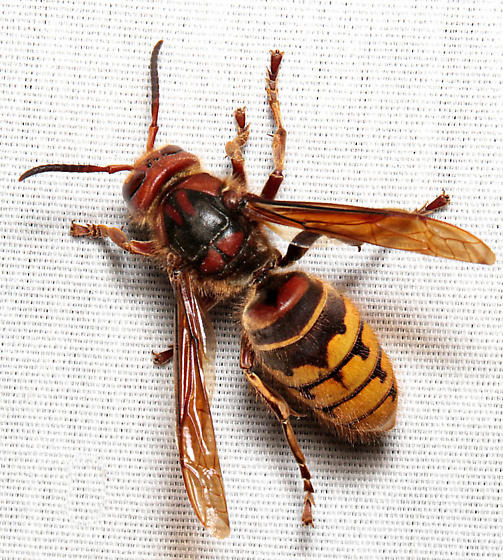
European Hornet - Vespa crabro. (Photo) Non-native, but established in the eastern U.S. Largest wasp most people have ever seen, but still half the size of the queen Asian giant hornet. Acts like other yellowjackets and such, no serious ecological threat.
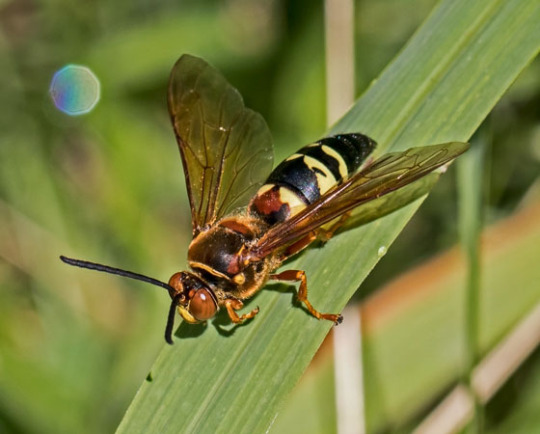
Eastern Cicada Killer - Sphecius speciosus (photo). Native, found east of the Rockies. Specializes on hunting cicadas. A large, solitary wasp, but not aggressive. Lives in burrows in the ground. About the size of the European hornet. They like sandy areas, so you might see them in fields or playgrounds.
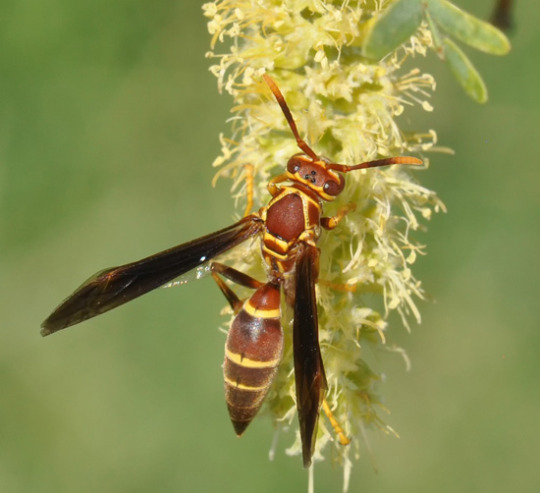
Paper wasps - Polistes spp. (photo). Native, common across the country, some species have yellow markings, others are brown or reddish. Social wasps, they build paper nests under awnings near human habitation, can be somewhat aggressive if you get too close to the nest but otherwise are approachable when foraging on flowers. Smaller, usually 3/4 inch or so.
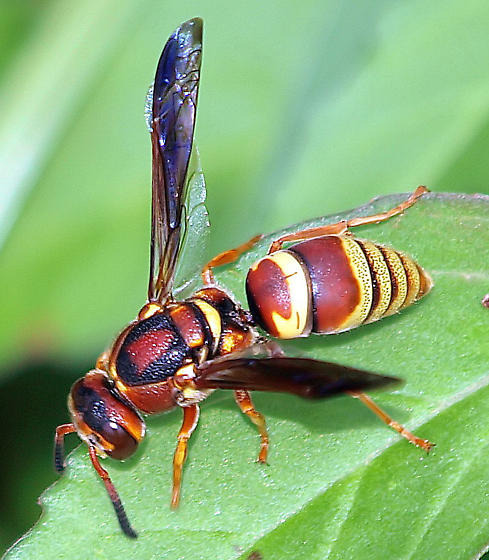
Potter and mason wasps - Eumeninae spp. (photo). We have hundreds of species of potter wasp, and in the southern U.S. many of them have red and yellow markings. This particular one is Euodynerus pratensis from Texas. These are solitary wasps, and are not very large, usually not exceeding 1/2 an inch, maybe the largest are 3/4in. They make mud nests, sometimes near human habitation, but they are docile and rarely cause conflict.
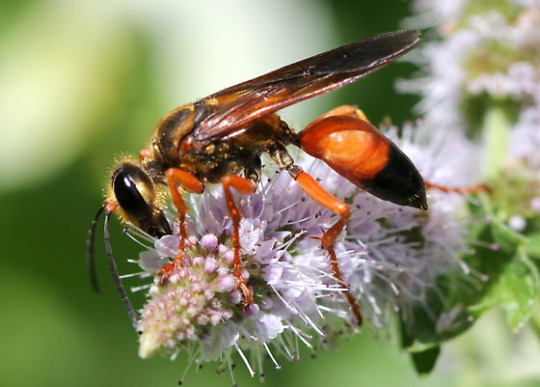
Great Golden Digger Wasp - Sphex ichneumoneus (photo). Common across the U.S., a large native solitary wasp common on flowers. Not really the same body structure as a vespid but just in case... these guys scare some people because they are large and gangly but they hunt grasshoppers and katydids and are generally non-intrusive. They live in underground burrows, not near humans. They’re good pollinators too!
I hope that alleviates some fear that comes with people starting to claim they’re seeing this wasp where it isn’t. It’s just another case of boy cries brown recluse spider. Most people are so unfamiliar with our native insect fauna that once they start noticing wasps, everything looks like the culprit just because they weren’t paying attention to what’s always been around them.
It sounds like they don’t know the extent of establishment yet, or when/how the AGH was introduced. Chances are, if people are starting to find them, then it’s already got a population. However, if early response methods can effectively control their spread, there’s a chance we can eliminate them. We have hundreds of invasive species here in the U.S. that are wreaking havoc on our ecosystems because we missed the short window in which to eradicate them. We do not know the total impact this hornet could have, until we thoroughly read the literature on its ecology back in Asia. It does pose a significant economic risk though, and a human health risk if they end up dwelling near human habitation (which they shouldn’t, I would think, unless you’ve got honeybee hives or feral colonies around). What we’re seeing is two non-natives battling it out - two species that should not be in North America at all. I do hope that we are able to stop this invasion in its tracks, but I also really hope it makes us reconsider the flaws in our agricultural system.
#thehermitreversed#asian giant hornet#wasps#insects#mine#i hope this helps a little?#i cannot deny that getting stung by this bamf can be deadly under certain circumstances#anyone else in this field who knows more about this situation please feel free to chime in!
11 notes
·
View notes
Text
Random tidbits, volume 3 (上)
[This is a submission I had to split into two parts. Italicized comments are mine. -Eirikr]
I’ll admit, this one’s a weirder set of tidbits than normal.
1. I checked Rosemary E. Guiley’s “Encyclopedia of Angels” (2nd edition). Victor is not there. Guess it doesn’t pass that test.
“Dictionary of Angels” by Gustav Davidson seems to be much more comprehensive, but a bit dry. Just aimed at giving you information, which is fitting for a dictionary. “Encyclopedia of Angels” isn’t as thorough, but covers some modern (as in twentieth century) tangentially related to angels topics, like their appearances in movies and near-death experiences.
I actually have a bit of a soft spot for Rosemary E. Guiley’s books. Remember this picture from Prognosticatio In Latino, the one I thought may have inspired Soul Hackers Satanael? I actually stumbled upon it in her “Encyclopedia of Witches, Witchcraft and Wicca”… in very low quality. I lot of evenings were spent looking for a higher quality version. ______________________________________________________________

I checked the above Soul Hackers bibliography and listed are two angel books not even part of the conversation: Know Your Angels by John Ronner (JP version) and Angels: An Endangered Species by Malcolm Godwin (JP version*). I’m not sure I’d recommend either of these. Ronner also wrote “The Angels of Cokeville and Other True Stories of Heavenly Intervention” and I think that’s probably a good review of Know Your Angels in and of itself. There’s a brief preview of Godwin’s on archive.org, and right away on the inside cover you’re treated to the best possible embarrassing dedication now forever enshrined:
[*Note: the Amazon link shows a JP pub. date of 2004 for the book which would be too late; however, the first printing was apparently in 1993.]

Would love to know what else Aaronman was brainstorming before he settled on The Fallen Aarngel. I seriously hope he adopted that moniker a few years later on his AOL account. But the book wastes no time in quoting Eurythmics lyrics so this is probably the official Generation X angel book and I honestly can’t fault it for that. In fact, I kinda want a copy now just in case I can ever get Aaronman’s autograph. ______________________________________________________________
2. Speaking of searches, I was wondering, do you ever have this experience of searching for/googling something and following what seems to be a prospective lead, only to one moment realize that it’s a wild goose chase and it should have been obvious from the start?
Let me give a couple of examples of what I mean:
Exhibit A
I tried to figure out the origins of Enlil’s role and depiction in Persona Q2. So far I haven’t found anything plausible (and let me tell you, my standards for that are much lower than yours). One of the leads I tried to follow was Nagi (Enlil’s human guise) mentioning how movies started in France. Looked up the first movie. Found Roundhay Garden Scene. It was made by Louis Le Prince. I won’t describe how I noticed this (it’s an embarrassing tale), but ‘Louis Le Prince’ is an anagram to 'precious Enlil’. As I started googling that phrase, I snapped out of whatever it was. Had to tell myself that an English anagram of a French guy’s name is unlikely to be what a Japanese developer intended.
Exhibit B
When I was trying to figure out meaning behind P5 Morgana’s name, I came across Teatro Brancaccio, originally called Teatro Morgana. As I was reading its history here, I thought that it interestingly parallels the adventures of Phantom Thieves (at least their first year). The theater went from regular theater, to a cinema one, back to regular, and finally one for musical performances. Phantom thieves went from their regular adventures (full of theatrics, I’d say, but I see how this point may be disputed) to a cinema-inspired adventure in Persona Q2, back to their regular adventure, and finally to a musical one in Persona 5: Dancing in Starlight. I don’t believe this comparison was intentional. This comparison is probably not that valid either. It seems to be a theater + cinema combo in the present, so unless I manage to tie Persona 5 Scramble into that (I’m waiting for western release to experience it) this analogy falls apart.
So yeah… Apophenia is strong with me. ______________________________________________________________
This happened to me all the time in the search for the mystery demons, particularly with the claim that many medieval beasts hailed from Ethiopia. Until I figured out that “Ethiopia” didn’t mean the modern country but instead just generally east. Like, whatever was foreign to Europeans. Yeah, it’s kind of one of those terms! But once I figured that out we started having a much better time and found Camphur right away. Yessss!
Anyway, thanks for leading me to Aaronman, probably my favorite discovery since Tingkat/Roluwi/Camphur and the others. This is exactly the kind of dumb obsession I need right now. I’ll get to the other part of the submission soon!
10 notes
·
View notes
Text
That Comprehensive Lusus Post: Good Mythical Mayhem
Alright, I’m gonna preface by just reiterating it might be a good idea to read this post before you continue, which was gonna be my introduction before it got longer than intended. Have you read it? Good! Then you know the way I’m breaking this down isn’t through the usual means, but rather through relative area of origin and moving from there. Now, of course, that being said I'm still gonna talk about the specific species too. So I’m not sure how long this’ll end up being, cause there’s gonna be a lot of explanation to start out. Here we go, I guess!
Total Mythical/Divine Beings: 394 (9.85% of all lusii)
What I expected to see lots of (and did): Dragons. Everyone knows dragons. Dragons appear in every culture, even in some surprising areas. On top of that, since a dragon is a dragon, even in fiction, I threw them under the dragon label instead of say, a fictional species, unless it was a particularly unique design to the show in question or a named character. A Ridgeback Dragon would just be a dragon, but Toothless would be HTTYD. But even if I took those out, it wouldn’t shrink the dragon count too much (only a +/-5, realistically as many dragons weren’t named). At 86 total, dragons are nearly 22% of all mythic beings.
What I didn’t expected to see lots of (and didn’t): Beings like Ifrit, Golems and Djinn from Jewish and Islamic faiths. A bit of a combination of I’m sure plenty of people don’t know exactly they are (Ifrits and djinn in particular), and wanting to sidestep using beings from those faiths.
What I expected to see lots of (and didn’t): ...There’s only 6 Krakens. Everyone and their mother has at least one sailor troll, yet there’s only 6 Krakens. My guess is most of them gave the sailor an octopus or shark, where there were much higher counts.
What I didn’t expect to see lots of (and did): Um....honestly? Archdemons. You know, those ones that get named and were probably a middle-of-the-road pagan god that the Catholic or Protestant Church refitted to discourage pagans? Yeah those....those came up more than I expected. So they’re kinda still under a deity label, which I’m aware they’re not but I really expected the first Baphomet to be the last.
What I wish I saw more of: Modern day Cryptids. One Jersey Devil? Two Bigfoots? Come on, man.
Alright, so here’s the breakdown by general area. I’m gonna preface it by saying trust me, any big grouping decision I made trying to keep this legible. For example, with the Asia category, yes I know that’s a huge, ridiculous area but there really weren’t any West Asian mythic beings that weren’t Middle Eastern, but calling it “Eastern Asian” felt disingenuous when I did have two that spread throughout all of Asia - nagas actually, which are found in Southwest and Southeast Asia - so I just expanded out the region. If I had one mythic being I could explicitly trace back to India that didn’t immediately jump into China/Japan I would’ve separated the two out, but I didn’t. So this is what happened. The locations are as follows:
Worldwide: So scattered throughout the world there’s not a good place to say where it came from. Many dragons (if you were really specific with your dragon I could pin it), jackalopes (there’s Persian jackalopes???), and some other things are a lot of this.
European: If it’s Anglo-Saxon or Germanic, it’s probably here. Most of these were just “European”, so spread out throughout Europe that, again, hard to pinpoint an area when Wikipedia is your resource.
Mediterranean: This is mostly Greco-Roman, but mermaids and griffins were also included in this count for a couple reasons: 1) Mermaids as a myth were originated by Alexander the Great and 2) Griffins are found in Egypt, Persia....and Medieval Europe. Having a “Mediterranean” group was the best way I felt to reconcile that.
Asian: As I explained, this one is only so big of an area because nagas just had to start in India and yeet over somewhere else. Thanks, Nagas.
Abrahamic: Jewish, Christian and Islamic creatures in particular are here. I separated them out from other Middle Eastern cultures since these are all 3 huge religions and there was a decent chunk from this group.
Americas: Again, I realize this is a huge cross-section, but this went as far south as Mexico and as far north as Alaska. There’s no better way for me to qualify this.
Celtic: Separated out from Europe because Celtic culture didn’t spread the same way others did. Really, it’s....kinda dead.
Middle East: Pretty self explanatory. For once.
Other Cultures: Ones that didn’t fit any better anywhere else. There’s only 2 here, most I could somehow finagle a grouping.

(imgur link)
Alright, so how did these further breakdown?
Mediterranean
Greco/Roman: 70
Mediterranean: 27
Greek Only: 7
European
European (Spread out): 50
Scandinavian: 8
British: 6
Germanic: 4
Nordic: 2
Finnish: 1
Russian: 1
Asian
Japanese: 19
Chinese: 9
East Asian: 7
Asian: 2
Mongolian: 1
Korean: 1
Buddhist: 1
Melanesian: 1
Abrahamic
Christian: 19
Abrahamic (all): 7
Jewish: 2
Islamic: 2
The Americas
Modern American: 7
Various Great Lakes Native Tribes: 3
Various Central American Native Tribes: 3
Latino: 3
Various Native Tribes Across the Americas: 2
Inuit: 2
Seneca: 1
Celtic
Scottish Only: 11
Irish/Scottish: 7
Irish: 1
Middle Eastern
Egyptian: 8
Persian: 5
Babylonian: 1
Middle Eastern: 1
Sumerian: 1
Iranian: 1
Other Locations
Central African: 1
Maori: 1
Worldwide: 85
Notes:
I can take a few educated guesses as to why the spread is as it is. Greco-Roman is probably as high as it is because Greek myth holds a lot of monsters with humanoid intelligence that could fit right along a Humanimal (thanks Zeus), plus unlike many other pagan religions, we still hold a lot of actual record. Widespread European beasts get used constantly in anything vaguely western fantasy, and and Japanese is obviously because y’all’re weebs for a similar reason.
You’re probably wondering if every single one under Celtic is fae. You would be correct.
Dragons were spread out between worldwide (if the dragon was nonspecific, since it could be any variant), European (wyverns and hexapodal dragons), British (if it was specifically a cockatrice) or Chinese (they were always named as such), and one specifically from the Seneca Tribe. I think dragons had the widest spread in this regard.
There’s some really bizarre facts I found out upon trying to categorize these. Including, but not limited to: chupacabras have been reported in Russia (???), the jackalope is just as Persian and middle eastern as it is American, and the spread of non-American cryptids was very high somehow.
Okay, now I’m not going to do a breakdown of every single mythic creature. That’s gonna take too long. If someone wants the full list (or curious if a specific mythic beast made an appearance at all) I can PM it, but even for this I’m not doing that. Instead, I’m going to list the ones that appeared in overwhelming majority. Anything that’s not listed appears less than 10 times in the overall list, and thus, are unlikely to have specifications anyway.
Dragon: 86
Divine/Infernal: 27
Cryptid: 25
Griffin: 21
Phoenix: 21
Hydra: 18
Fae: 17
Unicorn: 13
Chimera: 10
Dragons:
Dragon (completely nonspecific/only color or mutation mentioned): 42
Elemental Dragons: 12
Specified Dragon: 9
Wyvern: 7
Cockatrice: 6
Chinese Dragon :5
Lindwurm: 2
Other Dragons: 3
Divine/Infernal:
Demon: 9
Angel: 5
Quetzalcoatl: 3
Slepnir: 2
Thunderbird: 2
Other God: 6
Notes:
Baphomet was the most common demon used. Seraphs were the most common angel, however Gabriel was named specifically and a throne was once used.
Other Gods include Horus, Amaterasu, and Lamassu. Also the Grim Reaper, who I wasn’t 100% where else to put them.
Cryptids:
Yeti: 6
Mothman: 3
Loch Ness Monster: 3
Chupacabra: 3
Ningen: 3
Bigfoot: 2
Other Cryptid: 5
Notes:
Yeah, the low number of cryptids (and low variety of cryptids, honestly) caught me off guard considering how much cryptid talk seems to be on the site. Then again, I think the obsession with cryptids is much more recent and many people’s characters are very old.
Fae:
Kelpie: 8
Catsithe: 2
Fae (nonspecific): 2
Other Fae: 5
Notes:
There are 2 under kelpie that technically aren’t kelpies, however they’re functionally identical to kelpies (literally just a name change, not even an aesthetic one or identification one -- they are still fae in their mythos), so for convenience sake, they’re under kelpie.
Overall Notes:
While I didn’t break it down, there were a solid 3 people who used a qilin, or the Chinese unicorn.
I will make the note that it was impossibly hard to tell if someone meant the European phoenix or the Chinese one. I generally assumed the European one (due to its appearance in Harry Potter) over the Chinese one. I’m sure people have used the Chinese phoenix, it just never got stated as such and when say, the Chinese dragons (which have a unique body structure and function) and Chinese unicorns (which are so radically unique they even have their own name) got specified as such but there wasn’t one phoenix listed as “Chinese Phoenix”, I’m going to presume they’re European. If for whatever reason you happen to catch this and have a Chinese phoenix, I can check to see if you’re in the records and edit accordingly if so.
The breakdowns are very interesting when you consider canon. We have 4 distinct mythic (or heavily inspired by) mythic beasts in canon used: Terezi’s dragon, Equius’ centaur, Sollux’s bicyclops - which was really just a conjoined cyclops pair - and Gamzee’s capricorn. Dragons are, obviously seen here, highly common, but neither the cyclops (1), centaur (2) nor the capricorn (2) are. That being said, all 4 are either European (Terezi’s hexapodal dragon indicates a European backing) or Greco-Roman, which are common areas to pull from. It doesn’t really mean anything, I just think it’s neat.
Okay I realize I said I was going to do fiction alongside mythic, but....yeah I don’t think that’s easily feasible. So the next one will be fiction. And if I can squeeze it, the completely un-classifiable next. (Sorry for the slow schedule but it’s getting to the messy sections)
3 notes
·
View notes
Photo
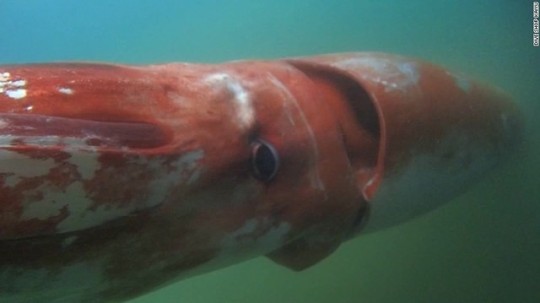

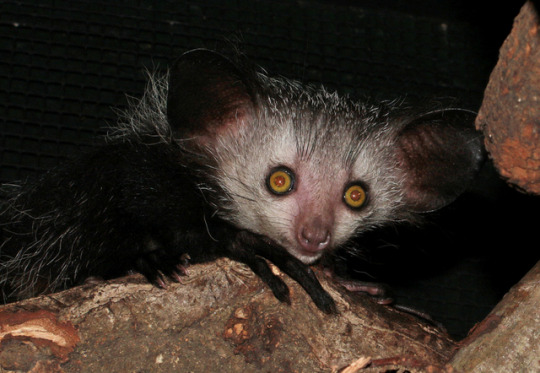
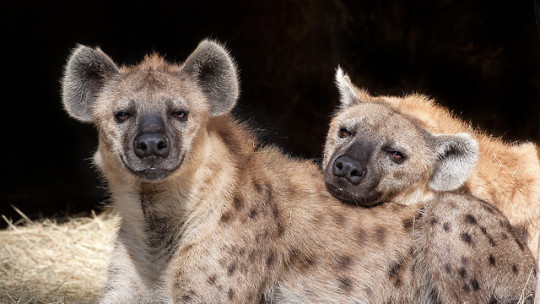
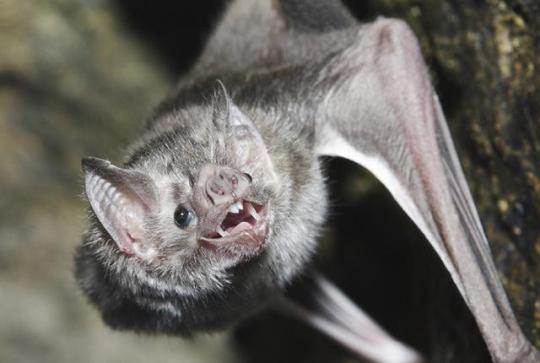

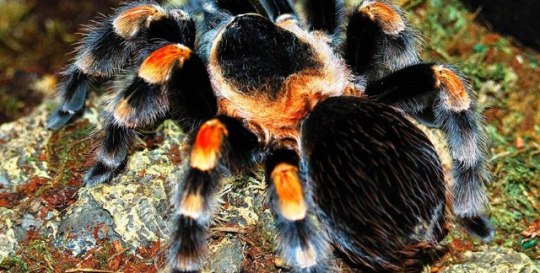

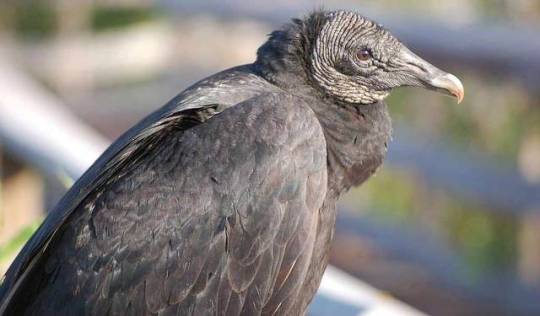

30 Day Monster Challenge 2 - Day #24: Favorite ‘Monster’ Animal
This was kind of meant to be my list of favorite animals that are generally considered ‘creepy’ or ‘bizarre’. They might seem incredibly tame these day, but I still remember a time when things like pet snakes were ‘weird’, and I wanted to talk about them.
1. Giant Squid
My favorite animal. A real life sea monster. I never thought that I would actually see one in my lifetime, even with all our modern technology. After the first monster challenge, we got our first clear recording of a giant squid swimming in a Japanese bay. Just that footage told us so much about them; how they swim, what they look like moving, the shape of their tentacles and mantle. Being squid instead of octopi, it’s unlikely that the Architeuthis Dux is particularly intelligent. But even still, looking into that giant eye, I couldn’t help but wonder; how much is going on in there? Does it know who we are? When it swims in the darkness of the Abyssal Zone, in a place that has never seen sunlight, will it remember us? It’s an exciting time for squid chasers, that’s for sure.
2. Aye-Aye
The Aye Aye keeps making ‘weird animal’ lists, and I honestly don’t understand why. It’s adorable! It’s a kind of nocturnal lemur that specializes in eating tree grubs. There’s a lot of superstition surrounding the Aye Aye on Madagascar; it’s considered an unlucky animal, and its elongated middle finger is supposed to give bad luck. I have a fantasy book that starts on Not-Madagascar, and the lemur-folks’ corrupt priests are all Aye Ayes; the look so cute in their robes and wooden masks. The Aye Aye is just a scruffy, scraggly little tree goblin that wants to sleep all day and eat more bugs.
3. Anglerfish
A wise man, a man who I think tumblr knows relatively well, once sang a song about an anglerfish, and that song got me through some hard times. Anglerfish are absolutely fascinating animals; aside from their individual biological adaptations that are common across the whole family, each anglerfish is incredibly unique. They are an incredible example of evolutionary diversity, especially given that they live in such an unforgiving environment. It’s hard to pick a single favorite anglerfish; bearded, hairy, football, wolftrap, glass, etc. But I think there’s something to be said for the classic black sea devil; basic shape, killer name, and everything you could want out of an angler.
4. Spotted Hyena
I feel like hyenas are coming down from the ‘creepy/weird’ animal lists. The world is collectively realizing that hyenas are actually adorable, and do a lot more work than they’re given credit for. Even still, there’s something to admire in just how strange they are compared to other mammals. While they’re efficient predators in their own right, hyenas will always be known for being scavengers. And of course, there’s the folklore surrounding them; hyenas are witches’ familiars in West African superstition, and even medieval Europeans though of them as unnatural creatures in their bestiaries. But I’m glad that we can appreciated hyenas more fully now.
5. Vampire Bat
Our representative bat is still the standard bearer for the ‘spooky’ animals. It’s hard to tell how long bats have been associated with evil and darkness in certain cultures; even before vampires became tied to them, they were thought of as ‘night creatures’, and the ancient Mayans even had the chthonic bat god Camazotz. But the contrast is just so broad when you actually look at the vampire bat. For starts, they’re tiny, like all members of the microchiroptera family; the average vampire bat can fit in the palm of your hand. They live in groups, and they actually share the blood they drink with their young. Even still, the vampire bat has enough features to keep it weird; its dietary habits are still unusual for bats, it spends an inordinate amount of time walking on the ground compared to other chiroptera, and it has to be said, it still has a face like a feral goblin.
6. Ball Python
We now enter the ‘used in movies to represent more dangerous species but actually a cinnamon roll’ portion of the list. Ball pythons are definitely a favorite when it’s time to put a snake on camera; they can grow pretty big, and they look exotic enough to be mysterious. But like hyenas, I feel like enough people know at this point that your average ball python is about as threatening as a pair of socks. It’s always hilarious to me to see a ‘cunning’ or ‘dangerous’ snake get referenced and then the crew pulls out a python. What’s it gonna’ do; sleep at the hero to death? Out in the wild you still get the odd case of a constrictor getting the drop on someone, which is barely enough to edge pythons on the ‘man’s predators’ list, but even those cases are freakishly rare. In the end, pythons are your legless, furless alternative to the cat; sleepy, hungry, and in constant need of body heat.
7. Red Knee Tarantula
Every movie’s favorite spider is the red knee tarantula. Their big, they look dangerous, and they’re striking color scheme makes them stand out. Of course, tarantulas are one of the most harmless family of spiders to humans; they’re a terror to anything smaller than your finger, but generally safe for people. Their venom isn’t enough to kill or even seriously injure a person, though their giant mandibles still give a nasty pinch. Honestly, a person is probably more at risk from the stinging hairs tarantulas release as a defense mechanism than their bite. While all tarantulas are fuzzy and loveable, I’m still fondest of the Mexican red knee just for its Halloween color scheme.
8. Emperor Scorpion
Naturally, as a Scorpio, I feel some predisposition to scorpions. I always liked them a little bit more than spiders, and still think that they’re the cooler of the two arachnids. The scorpion is one of nature’s near-perfect animals, capable of surviving in the harshest of environments. They were earth’s first terrestrial predators, the original monsters, and hunted our ancestors in the prehistoric oceans. These days, you can buy them at your mall pet store for a pretty reasonable price and feed them crickets. The emperor scorpion is still my favorite species because of how big and bulky it is. Its venom is relatively harmless because its claws have evolved to tear through the armor of its prey, though to us it’s just a nasty pinch. The whole goth-lobster package is offset by a pair of cute beady eyes looking up at you, begging you to have mercy on your species’ old nemesis and not stomp on it so it can scuttle away.
9. Black Vulture
It was a tough call in the bird department, but I feel like corvids and owls have gotten enough love now that we can start focusing on vultures. Vultures have an uphill battle, because stupid, ignorant people can’t appreciate how cool having anti-bacterial acid urine really is. Vultures are synonymous with barren places, true animals of the waste. They’re scavengers down to a ‘t’, and the go-to example for why scavengers are important to any ecosystem. While the Egyptian vulture is the most ‘vulturish’ and the bearded vulture the most MAJESTIC, my personal favorite is the good old black vulture. Black vultures have been in some weird and interesting places in my life, to the point that I’m starting to think of them as some kind of omen. An omen that says, “Oh boy, I get to see a vulture today!”
10. Xoloitzcuntli Dog
So the xolo dog takes bottom place by virtue of being a dog, and therefore a spiritually pure being inhabiting an earthly vessel to guide mankind towards goodness. These days, xolos are pretty popular, but I remember a time when Americans generally didn’t know about them by and large. When they first showed up in American media, they were labeled as ‘the world’s ugliest dog’, and I remember a few people wondering if they had mange or were pictures of chupacabras. With social media, everybody now knows that xolos are adorable, if still kind of comparatively weird looking, canine friends.
6 notes
·
View notes
Link
http://ift.tt/2vsm2n4
To us, the food we eat is the most normal thing in the world. We see it every day, we eat it every day, and we hear about it every day because people like to share pictures of their meals on every social networking site on the planet. But people who don’t share our eating habits might find what we consume to be rather strange, and the same holds true in the opposite direction. Deliciousness is in the mouth of the beholder.
We don’t condone eating dolphin meat. Or dog. This article is pointing out some cultures have different opinions about what is okay to eat.
#1 Dolphin Meat – Japan
Dolphin meat isn’t popular, but it’s consumed regularly and found in grocery stores. Despite being one of the most intelligent animals in existence, dolphins are killed for their meat and the purpose of culling their numbers. Some people consider these practices barbaric and would prefer it if Japan stopped hunting both dolphins and whales for good. The Japanese defend themselves by saying that they need the food and need to bring the population down to keep dolphins healthy, although some sources claim this doesn’t ring true.
While there are certainly many different arguments to the debate, the most important fact both sides aren’t mentioning is the mercury. Dolphins and whales have such high levels of mercury that they’re really not safe for human consumption. Perhaps those who are against whaling and dolphin hunting would have a better time convincing people if they pointed out the fact that they may be poisoned by their eating habits, rather than decrying the cruelty of hunting the animals in question.
#2 Tinned Spaghetti – New Zealand
If you live in the United States, there’s a good chance the closest thing you’ve seen to tinned spaghetti is SpaghettiOs. But in the United Kingdom and New Zealand it’s common to see spaghetti in a can, where it’s an absurdly popular food item (especially in New Zealand, where they consume 21 million cans of the stuff a year). America has Chef Boyardee and other canned pastas, but not real tinned spaghetti.
The most popular brand is Watties, which comes in a number of varieties including versions that have small sausages if you’re craving meat. Heinz also gets in on the act with a canned spaghetti product we’ll likely never see Stateside. Tinned Spaghetti is popular on toast, but it’s also been used quite a bit as the worst pizza ingredient imaginable. A jar of Wattie’s tinned spaghetti is used instead of sauce, and then you add cheese and any other desired toppings before baking your abomination to golden brown perfection. To many of us spaghetti in a can probably sounds like an affront to good taste, good pasta and good cooking, but it’s a beloved comfort food and staple item to many.
#3 Spam – Guam
Spam is well known around the world as a survival food you keep tucked away in your pantry for rainy days, because it doesn’t need to be cooked and it basically never goes bad. However, Spam didn’t always have such a popular position. When it was first released it was basically an army food, but most civilians didn’t find much appeal in it. And while soldiers are used to regrettable fare, even most of them said it was meat that didn’t pass its physical.
While the canned meat product has never been incredibly popular Stateside, it’s actually absurdly popular on certain islands. During World War II America shipped a lot of this stuff, and quite a bit of it ended up in the hands of island locals. Hawaii is in love with Spam, and Guam is completely obsessed with it. They get several more flavors than Americans do, they serve it with almost everything and they even have a sushi roll type dish that uses Spam instead of fish. In Guam they consume about 16 cans per person per year, the highest consumption in the world.
#4 Mammi – Finland
Finland, like all Scandinavian countries, is known for being metal and drinking a lot of booze. You might think one of their favorite traditional foods would be something brutal and crazy or another way to get drunk, but it’s actually a dessert. Called Mammi, it’s usually served on Easter. Often served with milk or cream, it looks like a big lump of brown stuff just kind of sitting in the milk. While hardly appetizing in appearance, the dish is a delicious treat.
A dessert that looks like a lump of brown stuff might not sound like it would require much work, but it actually has to be prepared carefully. There are many variations, but the main ingredients include water, sugar, rye flour, orange zest, molasses and seasonings. Then the recipe gets serious — you first have to let all the ingredients sit together for a long while to soak up all the different flavors, then you bake it, and then you chill it for several days before you actually get to soak it in milk and enjoy the fruits of your labor.
#5 Peanut Butter – United States
Peanut butter is absurdly popular in the United States. You’d be hard pressed to find a single American who doesn’t have some version of it in their fridge, pantry or both. A peanut butter and jelly sandwich is still considered a classic American lunch, and peanut butter is ubiquitous around the entire country.
It’s one of the most popular comfort foods in the country for a reason — it’s cheap, lasts a long time, provides fat and protein and is as simple and quick to prepare as you can get. If you’re on a budget, in a hurry or just want comfort food, peanut butter is the way to go. In other parts of the world this is considered strange — peanut butter is starting to make its way around the globe, but many Europeans still give it funny looks and consider it an odd product. There was a time when it wasn’t really known or used much outside of the States. Even now that’s available in many more countries it hasn’t gained any real traction, possibly due to the fact that Europeans don’t like adding sugar to every single one of their foods and most American peanut butter is packed with it.
#6 Dog Meat – China
In the West, even people who don’t particularly care for pets would balk at the idea of eating dog. They’re lovable, loyal little creatures who serve as faithful pets, but in some parts of China they’re an important staple. In Yulin they even have a yearly festival where about 10,000 dogs are eaten.
Animal rights protesters show up at these events and try to convince people to stop eating dog, but the locals feel they shouldn’t have to explain themselves. For them it’s not about eating a pet, it’s about sustenance. Many other kinds of meat are harder to come by, and one citizen told a protester that he would give up dog if the protester would give up beef. When asked about the hypocrisy of still eating beef while complaining about dog, one of the protesters explained that he thinks the two are different — he believes dogs simply have more worth on a moral scale than animals like cows.
#7 Brown Sauce – United Kingdom
In the United Kingdom, brown sauce is a popular condiment to put on all kinds of meals. The sauce is especially popular in England, where it was first created. Brown sauce starts off with a tomato base, but quickly changes from there. It also includes ingredients like rye flour, molasses, tamarind and malt vinegar. The most popular brand by far is called HP, which stands for Houses of Parliament. It serves a similar function to America’s obsession with putting ketchup on practically everything — the UK goes through about 27 million bottles of the stuff a year. The recipe was created over a century ago and still has enduring popularity to this day.
However, it was recently the victim of controversy. Due to regulations intended to keep salt in products down, Heinz changed the recipe and angered a lot of people in doing so. While it’s understandable that they needed to comply with the law, it seems silly to change something that worked so well for over 100 years.
#8 Salo – Ukraine
Popular in Russia and especially Ukraine, salo has similarities to both bacon and lard. But while bacon tends to have only stripes of fat while lard is the processed fat from a pig, salo resembles a huge hunk of meat fat at first, because that’s basically what it is. It will sometimes have a small layer of meat, but it’s nearly entirely fat.
In order to make the meat last longer it’s kept in the cold and dark as part of the curing process, so in essence you’re eating a pile of cured fat. This makes it a great food to keep you going through a long, cold, Slavic winter, but it certainly doesn’t sound appetizing. As a quick snack for energy it’s often consumed raw or quickly spread on bread. Don’t age it for too long though, or it will become inedible and more suited to the making of shoes. Bon appétit.
#9 Witchetty Grubs – Australian Aboriginals
In many parts of Australia high protein food can be quite scarce, so eating insects is a logical conclusion. Unfortunately, there’s really no way to convince someone who didn’t grow up eating bugs that doing so is anything other than completely gross. However, for aboriginals it’s always been a staple.
Witchetty grubs are actually the larval form of different moth species and are supposed to taste like almonds. They’re sometimes cooked to give them a nice coating on the outside, but are just as often consumed raw. While it sounds gross, it’s certainly efficient to simply pick your food out of the ground and then enjoy your meal.
#10 Stinkbugs – South Africa
Eating grub larva is one thing, but in some parts of the world humans eat even nastier bugs. You’ve probably heard of the stinkbug — they buzz all over the place and emit a foul odor if you squash them. Many see them as pests, but elsewhere they’re an important foodstuff that are harvested on a regular basis. They’re usually collected by hand in the early morning hours, before they start moving around too much.
Even stranger is the process for preparing them. Live stinkbugs must first be tricked into using their stink glands with a small amount of water. Then they’re rinsed in water multiple times, boiled to finish killing them, and cooked to prepare them for consumption. If the stinkbugs are already dead, an entirely different and much more complicated procedure has to be performed before they can safely be eaten. It seems like a lot of work just to munch on a few tiny bugs, but you have to work with the sources of protein you have available.
Source: TopTenz
0 notes